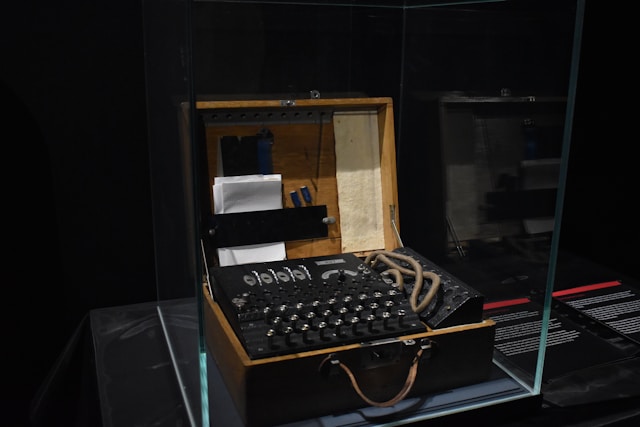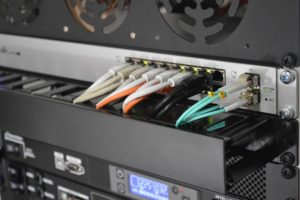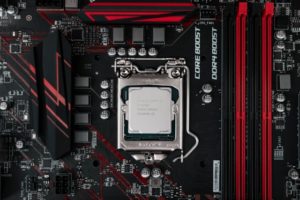The Computer Hacking Forensic Investigator (CHFI) course delivers the security discipline of digital forensics from a vendor-neutral perspective. CHFI is a comprehensive course covering major forensic investigation scenarios and enabling students to acquire necessary hands-on experience with various forensic investigation techniques and standard forensic tools necessary to successfully carry out a computer forensic investigation leading to the prosecution of perpetrators.
The CHFI certification gives participants (Law enforcement personnel, system administrators, security officers, defense and military personnel, legal professionals, bankers, security professionals, and anyone who is concerned about the integrity of the network infrastructure.) the necessary skills to perform an effective digital forensics investigation.
CHFI presents a methodological approach to computer forensics including searching and seizing, chain-of-custody, acquisition, preservation, analysis and reporting of digital evidence.
About This Course
Course Outline
CHFI v10 captures all the essentials of digital forensics analysis and evaluation required for the modern world — tested and approved by veterans and top practitioners of the cyber forensics industry. From identifying the footprints of a breach to collecting evidence for a prosecution, CHFI v10 handholds students through every step of the process with experiential learning. CHFI v10 is engineered by industry practitioners for professionals including those such as forensic analysts, cybercrime investigator, cyber defense forensic analyst, incident responders, information technology auditor, malware analyst, security consultant, chief security officers and aspirants alike.
– Computer Forensics in Today’s World
– Computer Forensics Investigation Process
– Understanding Hard Disks and File Systems
– Data Acquisition and Duplication
– Defeating Anti-forensics Techniques
– Windows Forensics
– Linux and Mac Forensics
– Network Forensics
– Investigating Web Attacks
– Dark Web Forensics
– Database Forensics
– Cloud Forensics
– Investigating Email Crimes
– Malware Forensics
– Mobile Forensics
– IoT Forensics
CHFI Course Benefits
– Inclusion of critical modules in Darkweb forensic and IoT Forensics
– Significant coverage of forensic methodologies for public cloud infrastructure, including Amazon AWS and Microsoft Azure
– Massive updates on all modules in CHFI
– Inclusion of latest forensic tools including Splunk, DNSQuerySniffer etc
– Addition of new techniques such as Defeating Anti-forensic technique, Windows ShellBags including analyzing LNK files and Jump Lists
– Extensive coverage of Malware Forensics (latest malware samples such as Emotet and EternalBlue )
– Now more than 50GB of crafted evidence files for investigation purposes
– More than 50% of new and advanced forensic labs
– In-depth focus on Volatile and Non-volatile data acquisition and examination process (RAM Forensics, Tor Forensics, etc.
– Accepted and trusted by cybersecurity practitioners across Fortune 500 globally.
Objectives
– Establish threat intelligence and key learning points to support pro-active profiling and scenario modeling
– Perform anti-forensic methods detection
– Perform post-intrusion analysis of electronic and digital media to determine the who, where, what, when, and how the intrusion occurred
– Extract and analyze of logs from various devices like proxy, firewall, IPS, IDS, Desktop, laptop, servers, SIM tool, router, firewall, switches AD server, DHCP logs, Access Control Logs & conclude as part of investigation process.
– Identify & check the possible source / incident origin.
– Recover deleted files and partitions in Windows, Mac OS X, and Linux
– Conduct reverse engineering for known and suspected malware files
– Collect data using forensic technology methods in accordance with evidence handling procedures, including collection of hard copy and electronic documents
Passing Score
In order to maintain the high integrity of our certification exams, EC-Council Exams are provided in multiple forms (I.e. different question banks). Each form is carefully analyzed through beta testing with an appropriate sample group under the purview of a committee of subject matter experts that ensure that each of our exams not only has academic rigor but also has “real world” applicability. We also have a process to determine the difficulty rating of each question. The individual rating then contributes to an overall “Cut Score” for each exam form. To ensure each form has equal assessment standards, cut scores are set on a “per exam form” basis. Depending on which exam form is challenged, cut scores can range from 60% to 78%.
Number of Questions: 150
Test Duration: 4 Hours
Test Format: Multiple Choice
Test Delivery: ECC Exam Portal



